How to Marshall a Jet
Method 1 of 2:
Gearing up and Getting in Position
-
 Wear a high visibility vest over your uniform or clothing. To meet U.S. Air Force regulations, for example, the vest must be 'fluorescent international orange' in color. In reduced visibility operations, you may also be required to wear a vest with reflective material on it.[1]
Wear a high visibility vest over your uniform or clothing. To meet U.S. Air Force regulations, for example, the vest must be 'fluorescent international orange' in color. In reduced visibility operations, you may also be required to wear a vest with reflective material on it.[1] -
 Use a pair of paddles or wands as your signaling tools. For daylight operations, use high visibility paddles, wands, or possibly gloves. For nighttime operations, use illuminated wands or flashlights with translucent cones attached.[2]
Use a pair of paddles or wands as your signaling tools. For daylight operations, use high visibility paddles, wands, or possibly gloves. For nighttime operations, use illuminated wands or flashlights with translucent cones attached.[2]- Make sure your illuminated wands or flashlights are in good working order. If one of them burns out while you're signaling during nighttime operations, the pilot is required to immediately stop.
-
 Protect your eyes and ears with proper safety equipment. Under some jurisdictions, you may be required to wear a helmet with a safety visor and hearing protection built in. Alternatively, it is vital that you wear safety goggles and adequate hearing protection in the form of ear plugs, ear muffs, or a headset.[3]
Protect your eyes and ears with proper safety equipment. Under some jurisdictions, you may be required to wear a helmet with a safety visor and hearing protection built in. Alternatively, it is vital that you wear safety goggles and adequate hearing protection in the form of ear plugs, ear muffs, or a headset.[3]- Jet engines can be loud enough to cause immediate hearing impairment, and they kick up small debris that can easily injure unprotected eyes.
- Make sure the safety gear you use meets the standards for your jurisdiction. For instance, you may be required to wear ANSI-approved hearing and eye protection in the U.S.
-
 Bring along your provided communication tool. You might be given a headset, for instance, or a handheld radio. Use your communication tool to keep in touch with the flight line supervisor and, in some cases, the pilots in the jets you're directing.[4]
Bring along your provided communication tool. You might be given a headset, for instance, or a handheld radio. Use your communication tool to keep in touch with the flight line supervisor and, in some cases, the pilots in the jets you're directing.[4]- Even if you do have radio communications with the pilots, it's still essential that you use your marshalling hand signals to direct the aircraft under your care.
-
 Stand in clear view of the pilot you're directing. When it's time to marshall a jet, stand forward of the left wingtip of the plane, far enough out ahead of the aircraft that the pilot can easily see you. Stay within view of the pilot until they are authorized to continue without your direction or have been passed on to another marshall.[5]
Stand in clear view of the pilot you're directing. When it's time to marshall a jet, stand forward of the left wingtip of the plane, far enough out ahead of the aircraft that the pilot can easily see you. Stay within view of the pilot until they are authorized to continue without your direction or have been passed on to another marshall.[5]- You'll get ample instruction on positioning yourself for both visibility and safety during your training to become an aircraft marshall.
Method 2 of 2:
Performing Common Hand Signals
-
 Identify yourself as the marshall by raising your arms. While facing the pilot, raise both arms straight over your head. If you're using wands, extend them straight up. If you're using paddles or gloves, point your palms or the paddles' faces towards the pilot.[6]
Identify yourself as the marshall by raising your arms. While facing the pilot, raise both arms straight over your head. If you're using wands, extend them straight up. If you're using paddles or gloves, point your palms or the paddles' faces towards the pilot.[6]- While there's a fair amount of overlap, marshalling signals are not always universal. You may note, for instance, variations in the signals used by the U.S. Air Force,[7] the UK's Civil Aviation Authority,[8] and the International Civil Aviation Organization.[9]
-
 Direct the pilot to another marshall by pointing with both arms. Lift both arms over your head to identify yourself, then lower and extend them either to your right or left side. Point the pilot in the direction of the marshall they should look for.[10]
Direct the pilot to another marshall by pointing with both arms. Lift both arms over your head to identify yourself, then lower and extend them either to your right or left side. Point the pilot in the direction of the marshall they should look for.[10]- Extend your wands, paddles, or fingertips along with your arms.
-
 Use a circular wave to have the pilot start the engines. Extend your left arm above your head and hold it steady. Extend your right arm with your elbow bent so that your hand is at ear level. With your right hand, extend your wand or index finger upward and make a twirling motion until the pilot starts the engines.[11]
Use a circular wave to have the pilot start the engines. Extend your left arm above your head and hold it steady. Extend your right arm with your elbow bent so that your hand is at ear level. With your right hand, extend your wand or index finger upward and make a twirling motion until the pilot starts the engines.[11] -
 Make a slashing gesture to have the pilot cut the engines. Start with the same positioning as the 'start engines' signal, with your left arm extended straight up and your right hand at ear level. This time, though, use your right index finger or the wand to make a slashing gesture across your throat.[12]
Make a slashing gesture to have the pilot cut the engines. Start with the same positioning as the 'start engines' signal, with your left arm extended straight up and your right hand at ear level. This time, though, use your right index finger or the wand to make a slashing gesture across your throat.[12]- Repeat the maneuver if necessary until they cut the engines.
-
 Wave your arms to direct the jet forward. Extend both arms outward at shoulder height. Bend them at the elbows to wave your lower arms back and forth to the sides of your head.[13]
Wave your arms to direct the jet forward. Extend both arms outward at shoulder height. Bend them at the elbows to wave your lower arms back and forth to the sides of your head.[13]- Keep waving as long as you want the pilot to keep moving the plane forward.
-
 Have the pilot turn right or left by waving only one arm. Assume the starting position for the 'move forward' signal, but keep one arm extended while bending the other at the elbow to wave it back and forth beside your head. Choose which arm to wave based on which way you want the pilot to turn the plane:[14]
Have the pilot turn right or left by waving only one arm. Assume the starting position for the 'move forward' signal, but keep one arm extended while bending the other at the elbow to wave it back and forth beside your head. Choose which arm to wave based on which way you want the pilot to turn the plane:[14]- To have the pilot turn the jet to their left, wave your left arm and point with your right arm.
- To have the pilot turn to their right, wave your right arm and point with your left.
-
 Cross your wands or hands overhead slowly to direct a normal stop. Extend your arms outward to your sides at shoulder height. Slowly raise them overhead and bend your elbows so that you can cross your wands or hands right above your head.[15]
Cross your wands or hands overhead slowly to direct a normal stop. Extend your arms outward to your sides at shoulder height. Slowly raise them overhead and bend your elbows so that you can cross your wands or hands right above your head.[15]- The pilot should be able to bring the jet to a full stop just as you cross your wands or hands.
-
 Direct an emergency stop by making a faster signal. The emergency stop signal is the same as the normal stop one, only much faster. Cross your wands or hands overhead as quickly as possible to get the pilot to stop the plane immediately.[16]
Direct an emergency stop by making a faster signal. The emergency stop signal is the same as the normal stop one, only much faster. Cross your wands or hands overhead as quickly as possible to get the pilot to stop the plane immediately.[16]- This may be necessary, for instance, if you spot an obstruction on the ground.
-
 Tell the pilot to slow down by waving your arms beside your hips. Extend your arms to your sides at about waist height. Wave your arms up and down between waist and knee height until the pilot slows down to your liking.[17]
Tell the pilot to slow down by waving your arms beside your hips. Extend your arms to your sides at about waist height. Wave your arms up and down between waist and knee height until the pilot slows down to your liking.[17] -
 Use your fist to direct the pilot to set or release the brakes. To have them set the brakes, keep one hand to your side and raise the other to just above shoulder height. Show them your palm, then slowly close your raised hand into a fist. Start with a fist and slowly open your hand to direct them to release the brakes.[18]
Use your fist to direct the pilot to set or release the brakes. To have them set the brakes, keep one hand to your side and raise the other to just above shoulder height. Show them your palm, then slowly close your raised hand into a fist. Start with a fist and slowly open your hand to direct them to release the brakes.[18]- In either case, you must hold this signal until the pilot confirms that they've complied. They'll do this by giving a 'thumbs up' gesture.
- You can use either hand for these signals. If you're using wands or paddles, hold them both in the hand that's at your side.
-
 Give a thumbs up or thumbs down gesture as needed. For the thumbs up, hold one arm at your side and extend the other so your hand is at about ear level. Extend your thumb or the wand up to indicate an 'all clear' or to answer in the affirmative (in the case of a technical or servicing issue).[19]
Give a thumbs up or thumbs down gesture as needed. For the thumbs up, hold one arm at your side and extend the other so your hand is at about ear level. Extend your thumb or the wand up to indicate an 'all clear' or to answer in the affirmative (in the case of a technical or servicing issue).[19]- For the thumbs down, extend one arm straight out at shoulder level and point your thumb or the wand straight downward. This is only used to answer in the negative regarding technical or servicing issues.
5 ★ | 1 Vote
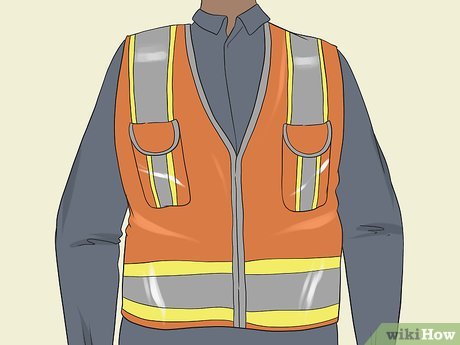
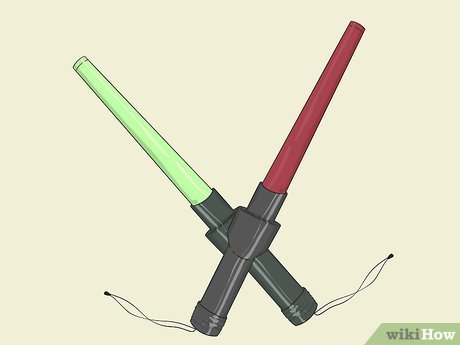
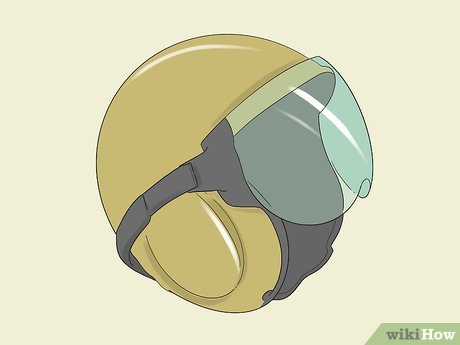
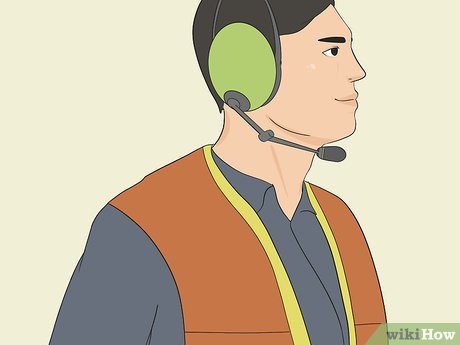
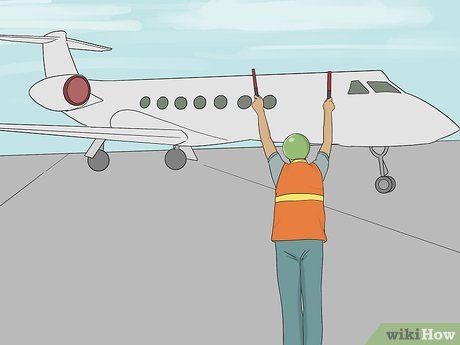
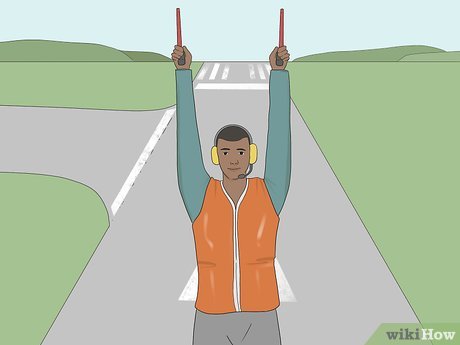
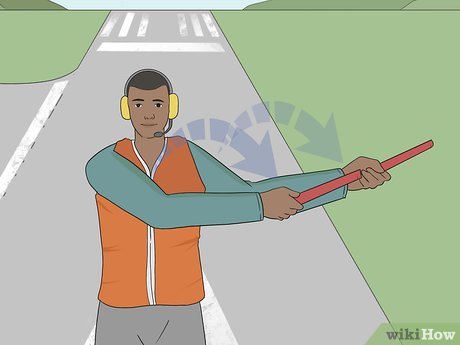
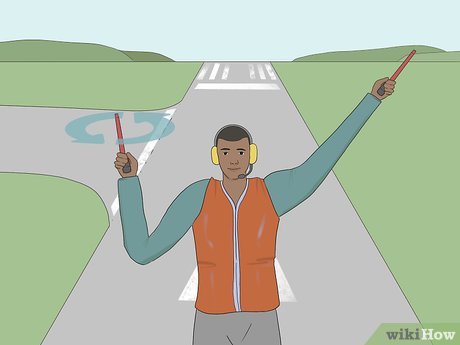
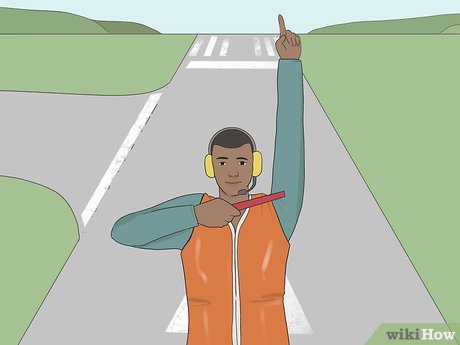
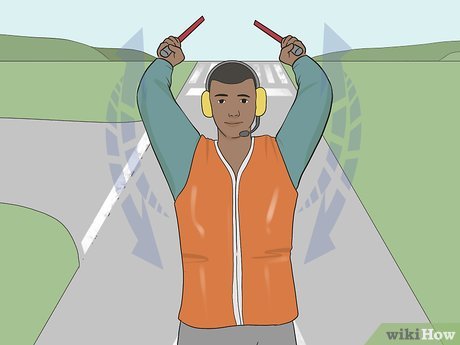
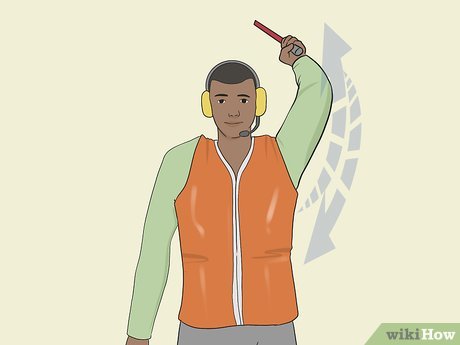
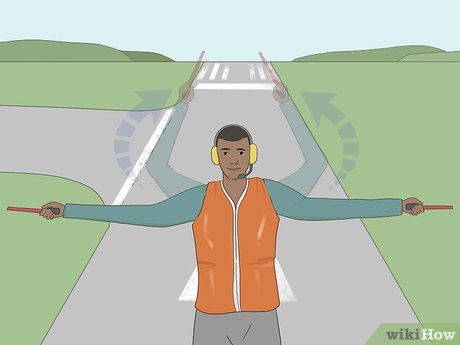
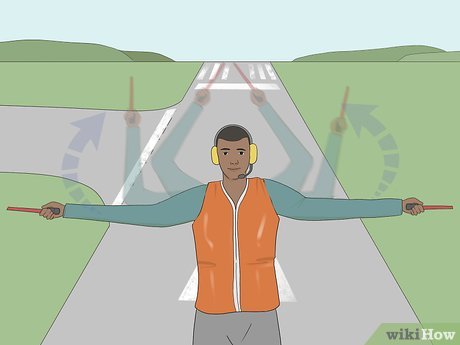
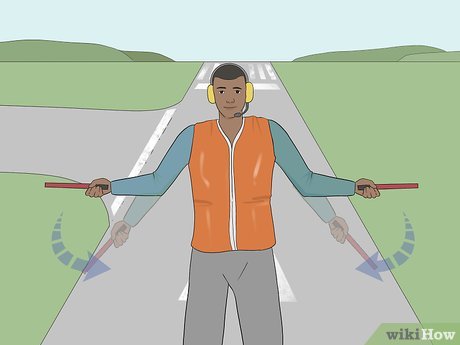
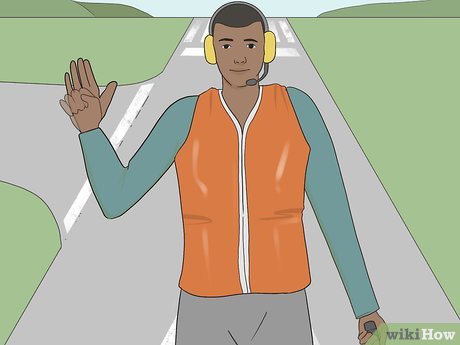
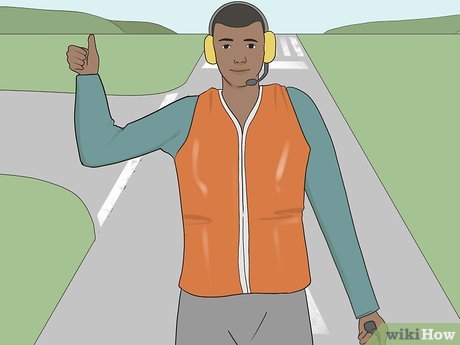
 How to Fly a Hot Air Balloon
How to Fly a Hot Air Balloon How to Prepare to Fly an Airplane in an Emergency
How to Prepare to Fly an Airplane in an Emergency How to Get Your FCC General Radiotelephone Operator License at Home
How to Get Your FCC General Radiotelephone Operator License at Home How to Make Battery Cables
How to Make Battery Cables How to Use a Winch
How to Use a Winch How to Use Brake Spring Pliers
How to Use Brake Spring Pliers